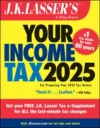Back-to-School Tax Breaks
In the coming weeks, it’s back-to-school time. This can mean tax saving opportunities for you. The tax law provides a number of exclusions, deductions, and tax credits designed to encourage education by making it just a little easier to pay for it. Here are some key breaks that you may be able to take advantage of this year.
Tax-Free Benefits
The best type of tax break is receiving something that costs you nothing and that is not taxable to you. It’s like a gift from your Uncle Sam.
Scholarships and grants. The receipt of scholarships, fellowships, and grants by a degree candidate to pay for tuition at a primary or secondary school, college, or vocational school is tax free. Room and board and other expenses paid by a scholarship, fellowship, or grant are not tax free.
Job-related breaks. You may be able to enjoy education courtesy of your employer without paying income tax on this job-related benefit. You can exclude:
- Up to $5,250 of benefits paid under an education assistance program — the courses need not be job related. The plan must be nondiscriminatory (it can’t favor owners and management).
- Any amount (as a working-condition fringe benefit) if the courses are job related. To qualify for this break, you must be able to have deducted the cost of the courses if you’d paid for them yourself (see Deductions below).
If you work for a college or university that offers tuition reduction for you, your spouse, or dependents, the cost can be tax free. Generally, the break is limited to undergraduate courses at your institution, or at any other institution for which there is a reciprocal tuition agreement. A graduate student who is paid for teaching or research activities is not taxed on tuition (at the graduate level) related to these activities.
Interest on savings bonds. You can cash in U.S. savings bonds — series EE or I — to pay for higher education and avoid paying tax on the bonds’ interest. There is no dollar limit on the amount of interest that can be tax free. However, there are certain other requirements that must be satisfied for the interest to be tax free:
- The bonds must have been issued after 1989 to you (not to your child), and you must have been at least 24 years old when you bought them.
- Your modified adjusted gross income (MAGI) in the year you redeem the bonds can’t exceed a set limit.
- The funds must be used to pay qualified education costs for yourself or your spouse or dependent. Qualified costs include only tuition and fees at an eligible educational institution; room and board, books and supplies, and the like do not qualify.
Tax-free withdrawals from education plans. You can tap into certain education plans; the withdrawals won’t be taxed if the money is used for qualified purposes:
- 529 plan withdrawals — tuition and fees, room and board (for at least a half-time student), books, supplies, and equipment
- Coverdell education savings plan withdrawals — tuition and fees, room and board, books and supplies, and certain transportation at both elementary and secondary school as well as for higher education (even certain academic tutoring may qualify)
Deductions
Certain expenses may be deductible. Where the deduction is taken — from gross income or as an itemized deduction — depends on the nature of the deduction and, in some cases, whether you are an employee or self-employed.
Work-related courses. You can deduct the cost of work-related courses you take. To qualify, you must meet the minimum education standards for your job, and the courses will not qualify you for a new trade or business. The deduction covers tuition and fees, books and supplies, as well as travel to and from the course location.
The deduction can be claimed only as a miscellaneous itemized deduction on Schedule A if you are an employee (Schedule C if you’re a self-employed person). Those who do not itemize cannot benefit from this break.
Caution: A tuition-and-fees deduction from gross income (no itemizing required) expired at the end of 2007. This break had allowed a deduction of up to $4,000 annually for those with income below set levels. Congress is expected to extend the break for 2008, but no action has yet been taken.
Student loan interest. If you borrow money to pay for your own education, you can deduct the interest up to $2,500 annually. This deduction is “above the line” so you don’t have to itemize your other deductions to claim it. However, there are income limitations; if you are over the threshold, you cannot take this break.
Credits
Tax credits reduce your tax bill dollar for dollar, so a tax credit goes a long way toward significant savings. You qualify for the tax break whether you pay the bill with student loans or savings.
Hope credit. This credit applies only for a student’s first two years of higher education. For 2008, the credit is 100% of the first $1,200 of qualified expenses, plus 50% of the next $1,200 of expenses, for a top credit of $1,800. The credit is figured on a per-student basis, so a family with three children in their freshman and sophomore years of college can claim a credit of up to $5,400.
Lifetime learning credit. This credit applies for any higher education for you or your spouse or dependent. The credit is $2,000, regardless of the number of eligible students.
Both credits have the same income limits; if you exceed them, no credit can be claimed. Both credits generally apply only to tuition and fees. Fees paid to the educational institution, which qualify for the credit, can include books, supplies, and equipment required for courses.
Credit
A tax credit directly reduces tax liability, as opposed to a deduction that reduces income subject to tax.



